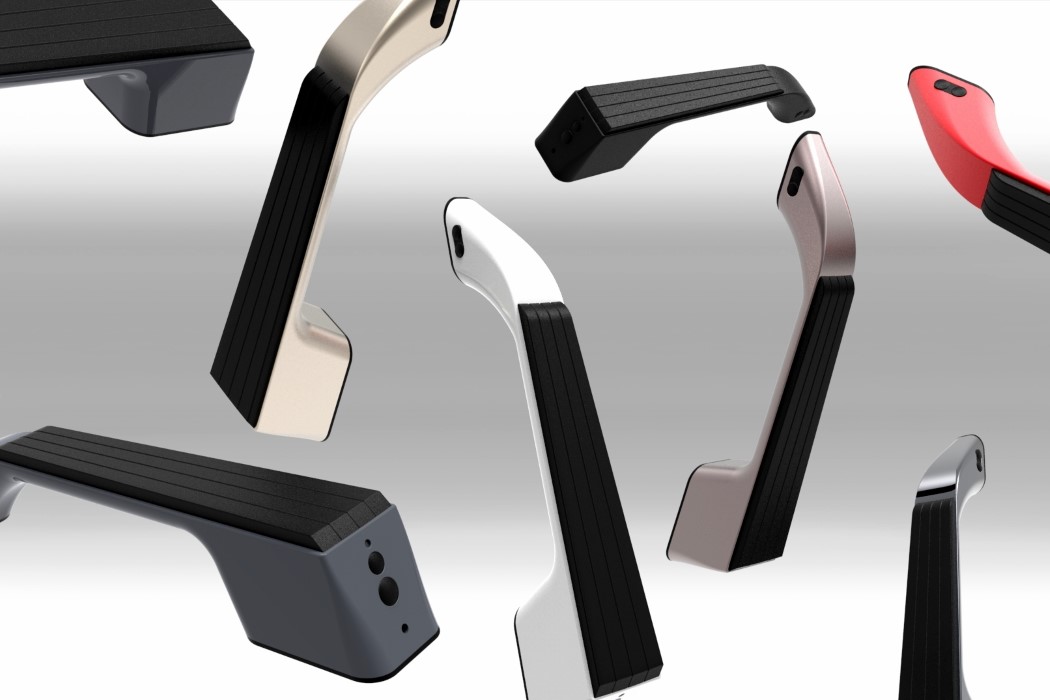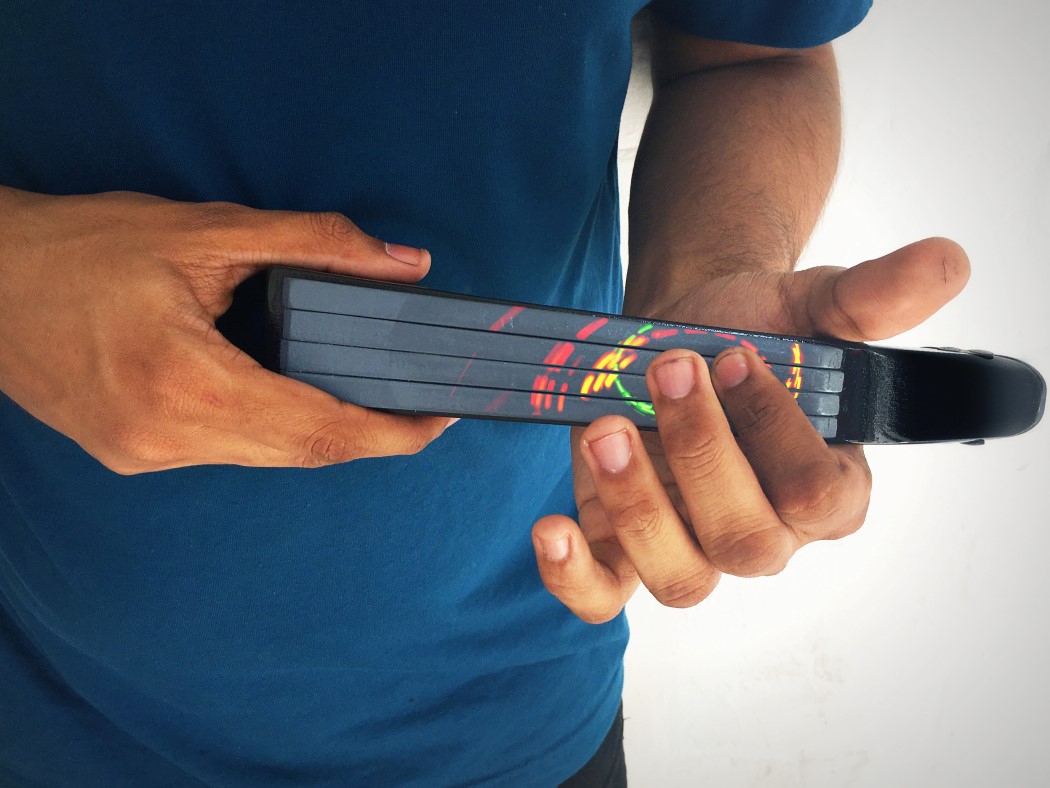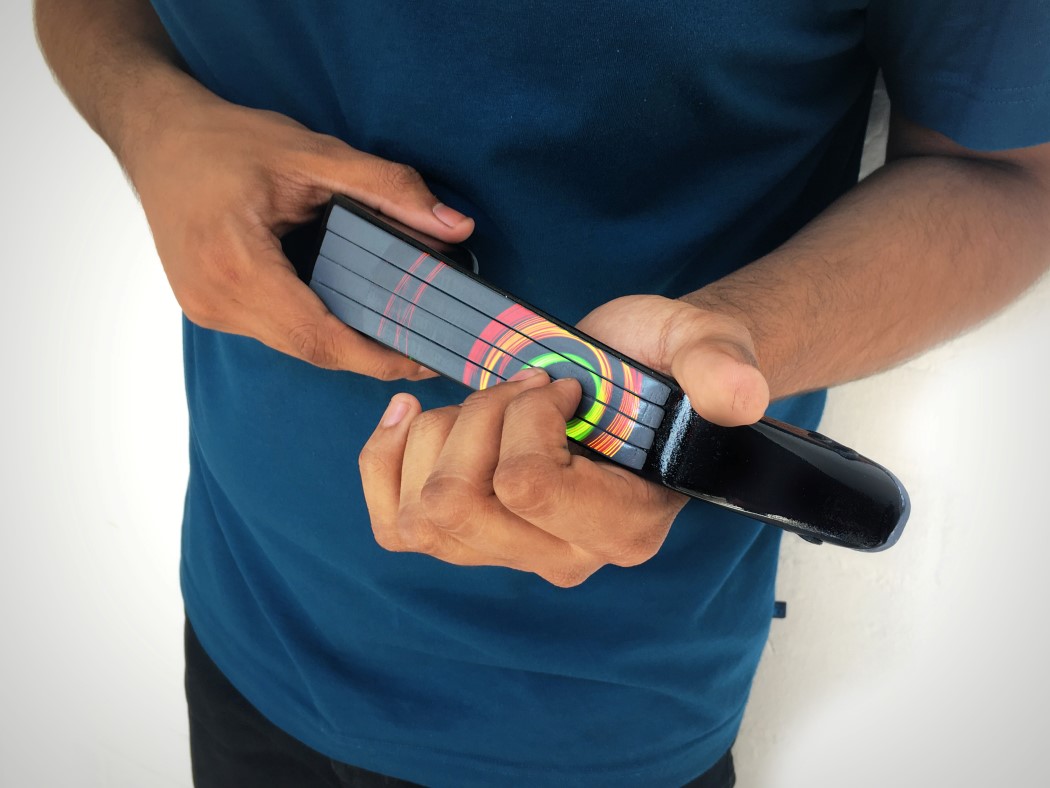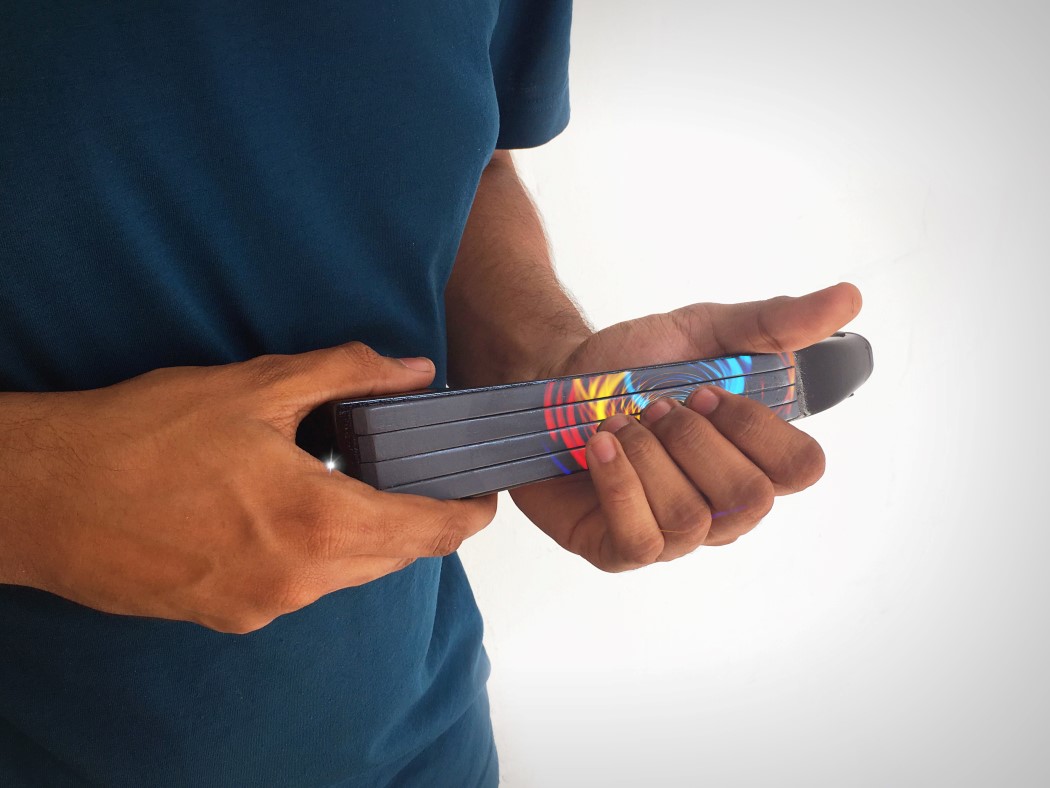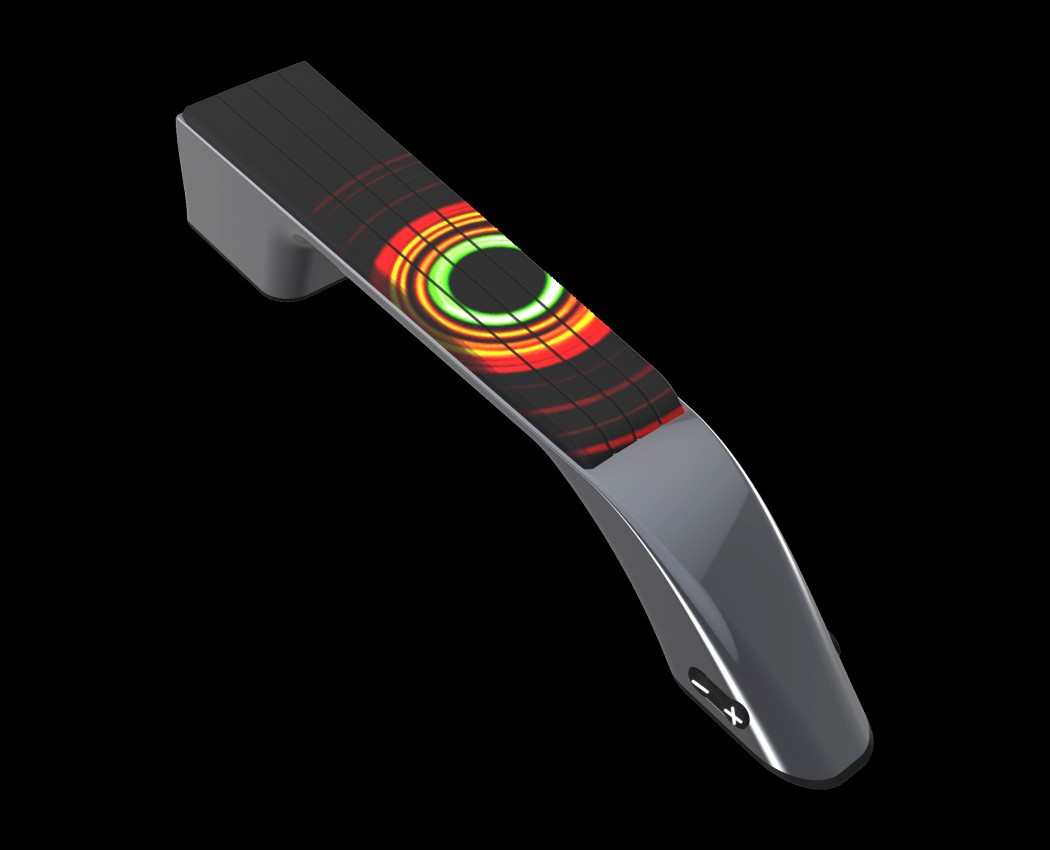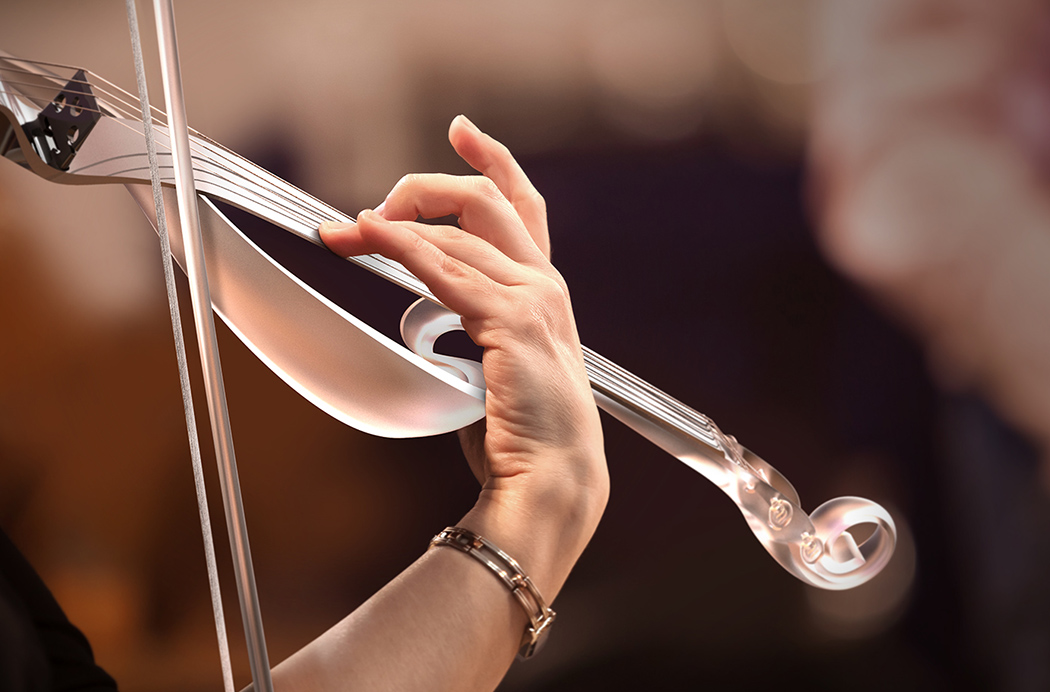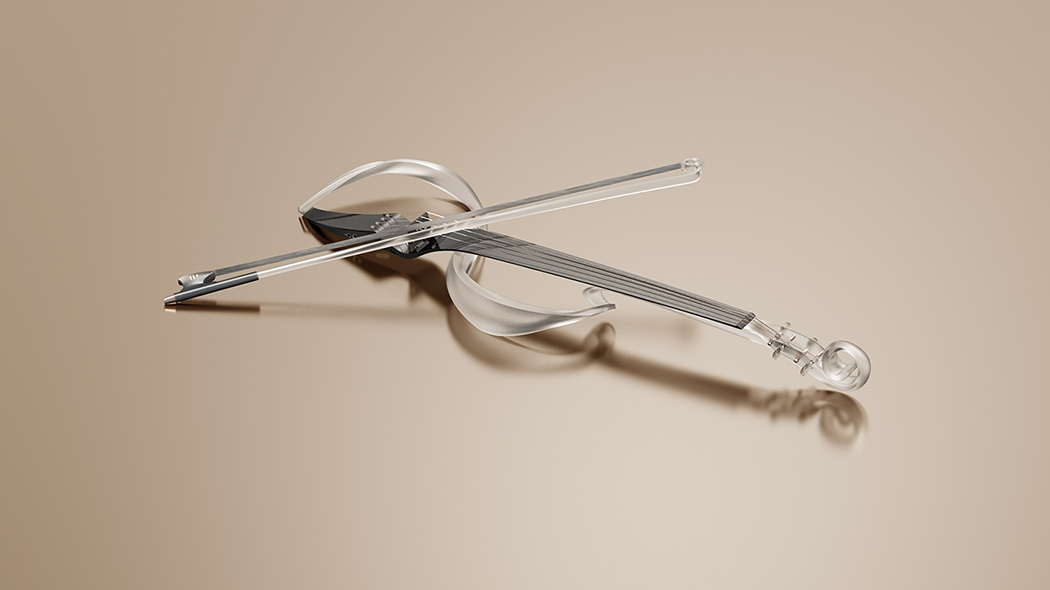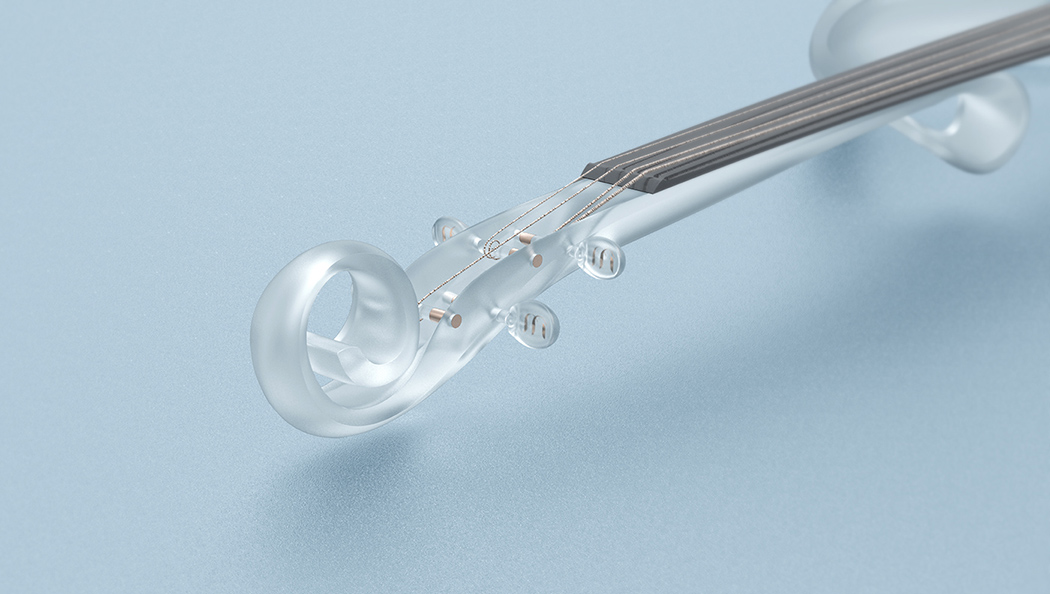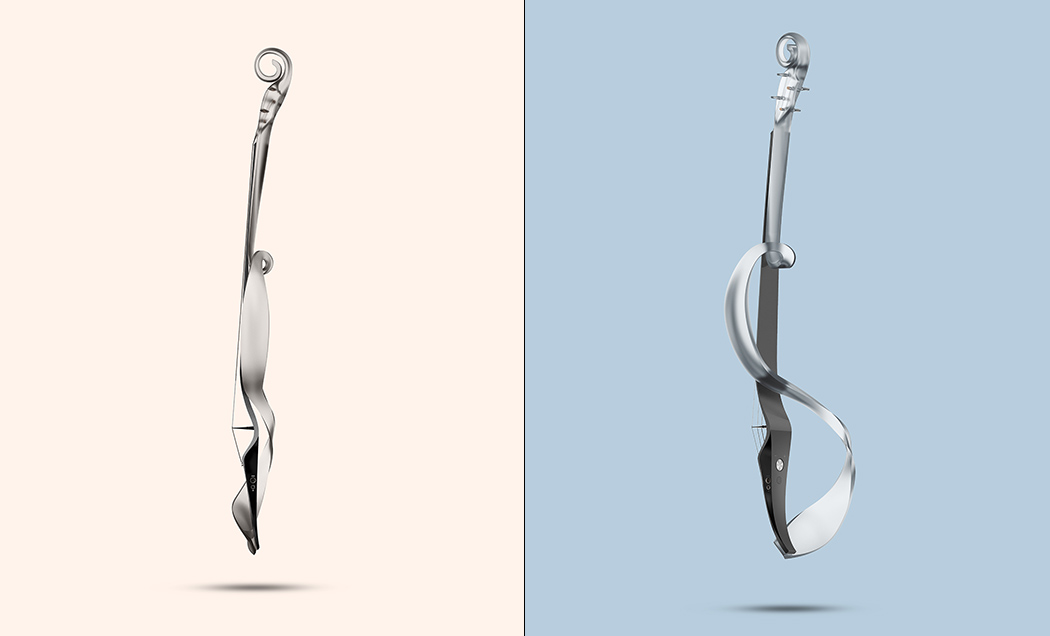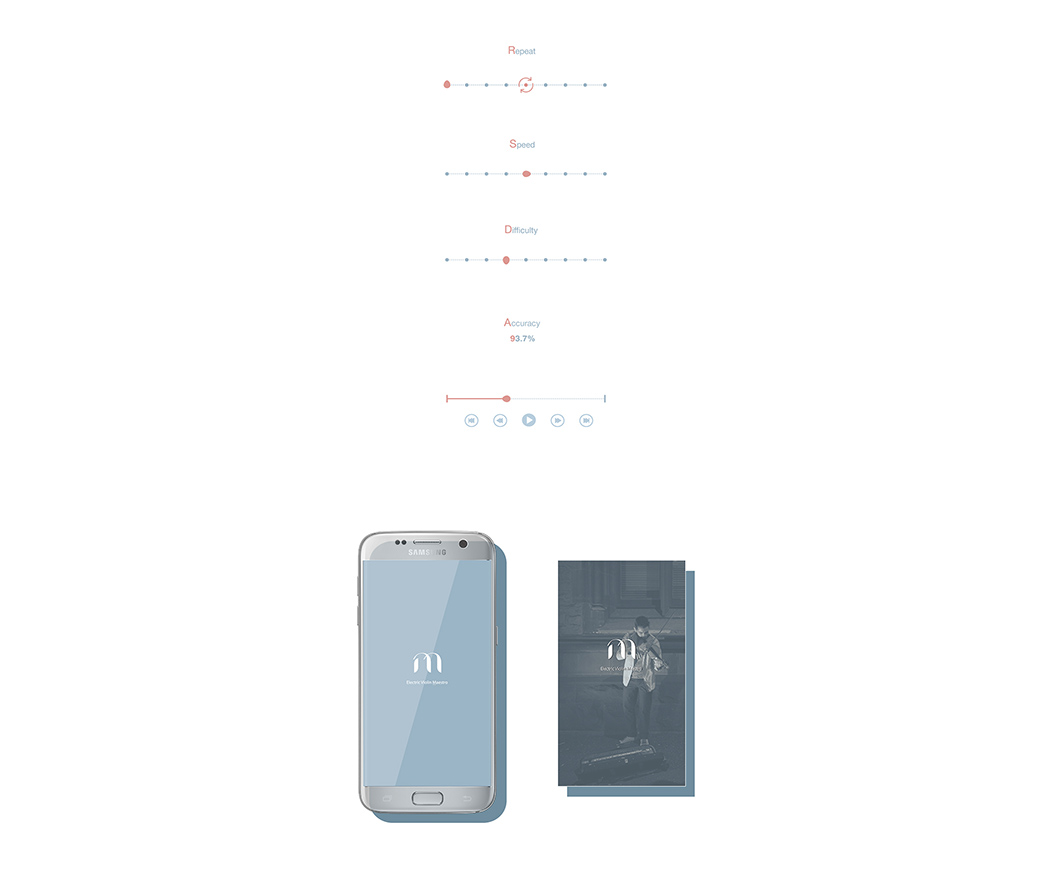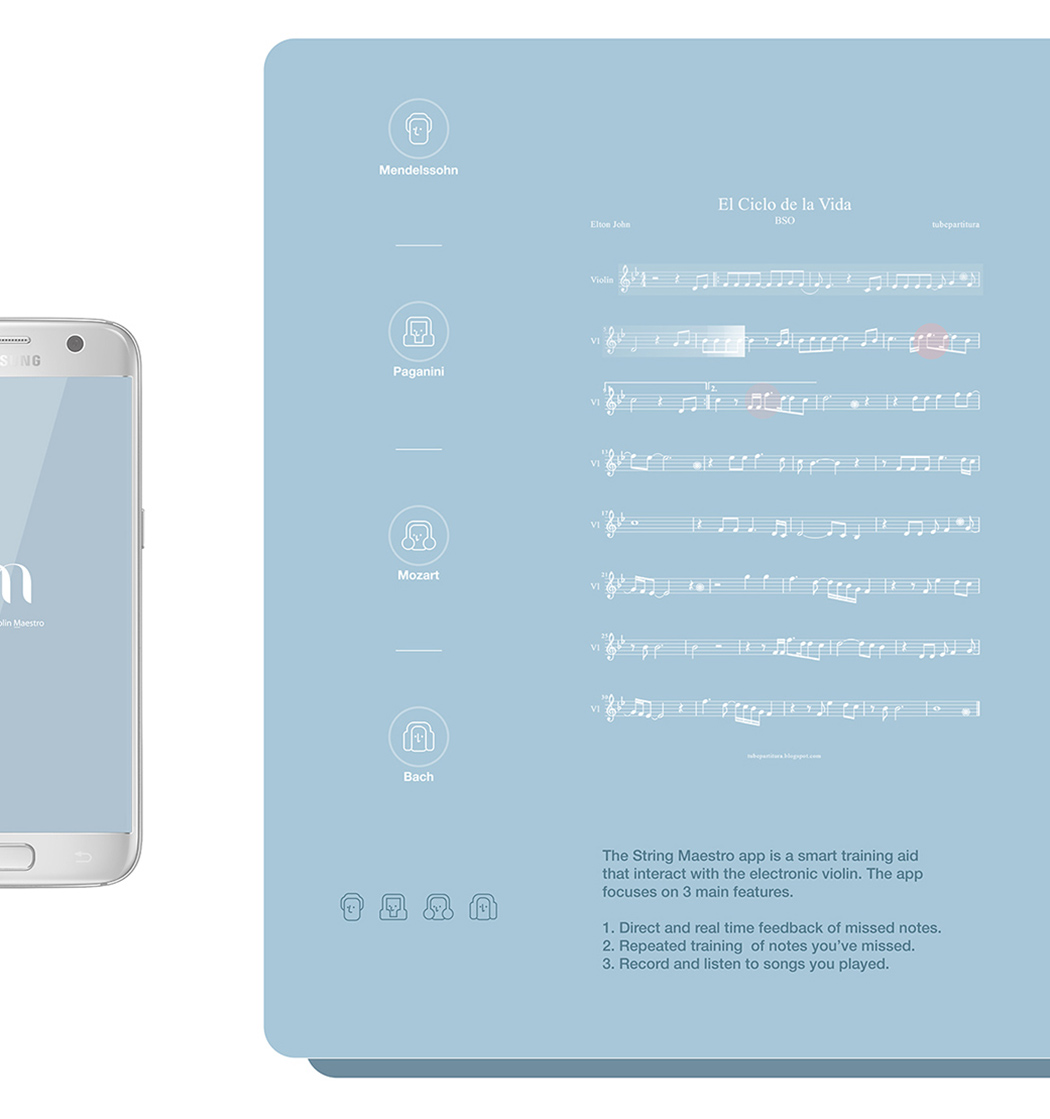The IMI (or Intuitive MIDI Interface) makes even the best air-guitarists actual musicians! This tiny device is designed to showcase MIDI technology’s capabilities outside the Keyboard setup and in the format of an electronic violin, something new and refreshing.
The IMI strips the violin of everything deemed unnecessary, including its iconic acoustic chamber and even the bow, and brings it down to just the fretboard, where most of the action happens. Ditching the strings too, for a touch-sensitive surface, the notes are triggered when contact is made, eliminating the need for the bow. You can even pull off vibratos naturally by slightly oscillating your fingertips against the touch-active fret surface, which is rather unique, because while most MIDI instruments (keyboards and pads particularly) capture 3 parameters i.e., note on, note off, and velocity or how hard you hit the note, the IMI works on a principle very similar to ROLI’s Seaboards, that allow for sliding between notes (not possible on keyboards) in a manner that makes violinists feel comfortable from the get-go.
The small instrument is designed to occupy almost a third of the space of a traditional violin. It doesn’t rest between your chin and your collar either, the way conventional violins do, but rather can be played almost like a ukulele, against your hip, being worked pretty much only with your left or right hand (depending on your orientation)… leaving the other hand free to probably work another instrument, or electronic music equipment. It comes armed with power and volume controls, as well as a 3.5mm jack that works as an audio output. Since the IMI is completely MIDI based, you can not just play, but even capture MIDI transcripts using a MicroUSB outlet on the back and edit them. You can even go as far as choosing which style/sound of violin you want the IMI to replicate by just selecting from your sound-bank. Plus, since this little dream of a device is completely electronic, no more having to tune! Amateurs and experts rejoice!
The IMI is currently a student project, but the designer plans on expanding the IMI range to cover instruments like the Guitar, Ukulele, and even the Flute. Stay tuned for more details!
Designer: Viraj Joshi

